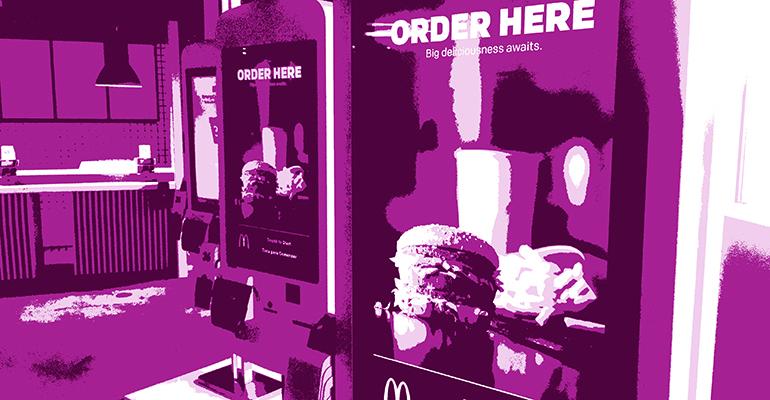Will restaurant workers who take customers’ orders one day become obsolete?
Probably not, but the industry is moving toward a future in which more guests place orders on computer screens inside restaurants.
Some of the world’s biggest restaurant chains are moving in that direction. McDonald’s, the largest of the bunch, has been adding kiosks in international markets for years.
McDonald’s wants to expand its “Experience of the Future” model, which includes kiosks, in most of its 14,000 domestic locations by 2020. And its competitor Wendy’s plans to add kiosks in 1,000 locations by the end of the year.
The efforts follow fast-casual operator Panera Bread, which added kiosks at its 900 company-owned locations in its “Panera 2.0” model, which includes online ordering and other features.
Smaller chains are also following suit. Fast-casual BurgerFi has tested kiosks at one of its 91 restaurants. And seven-unit Eatsa, the San Francisco-based healthful-food concept, doesn’t have employees to take orders at all — just kiosks.
Kiosks have entered the debate over rising minimum wages. Many see them as a natural result of higher labor costs. In theory, kiosks can result in chains employing fewer workers.
But efforts so far appear to be mostly at the top line. Restaurants see kiosks as a way to improve service, with faster ordering and fewer mistakes. Consumers are more relaxed at kiosks and tend to order more items.
McDonald’s executives said its restaurants with kiosks generate sales growth of 4 percent to 8 percent.
At Panera Bread, same-store sales at company-owned restaurants, where kiosks are prevalent, increased 4.2 percent in 2016. At franchised locations, which have been slower to add the technology, same-store sales rose 0.7 percent.
Contact Jonathan Maze at [email protected]
Follow him on Twitter: @jonathanmaze






